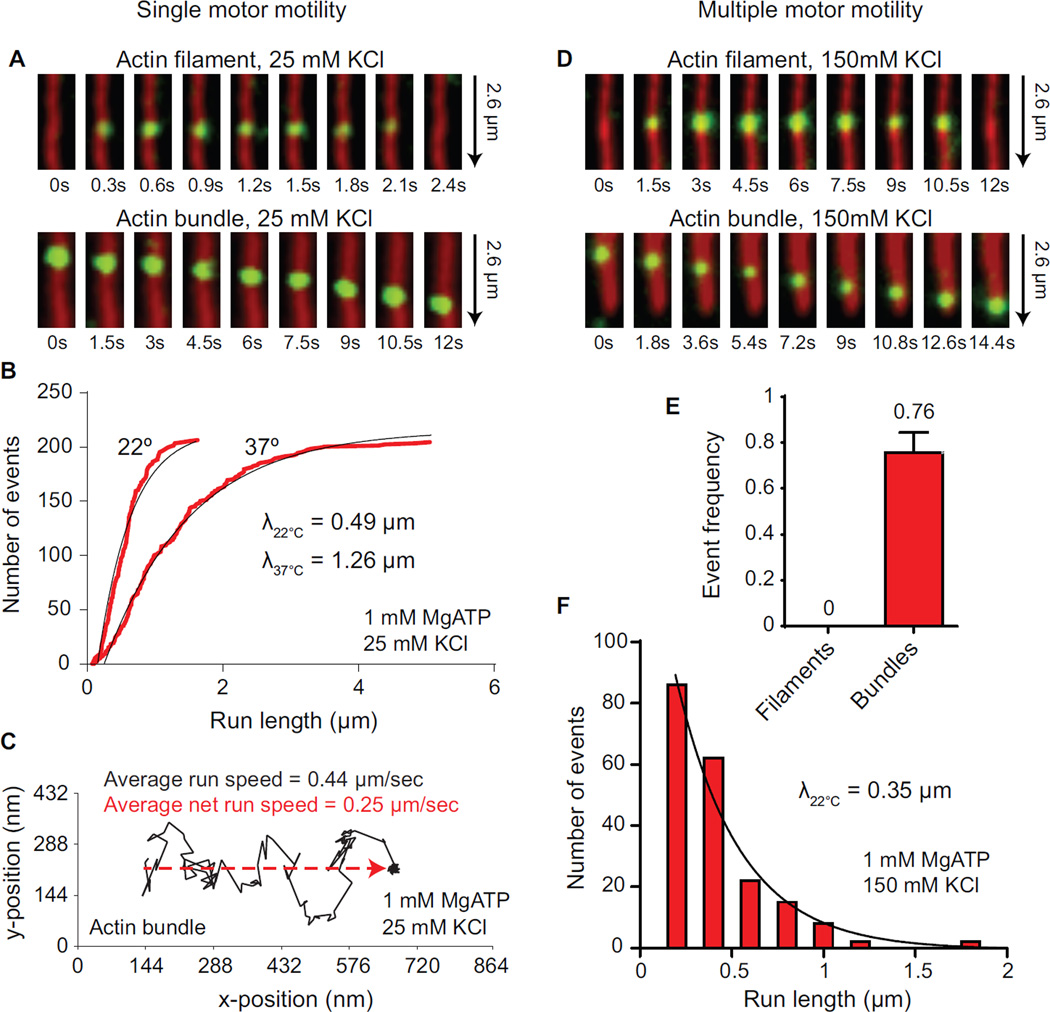Figure 2.
Single and multiple MyoVc motors are selective for actin bundles.
(A) TIRF microscopy images showing no movement of a single MyoVc bound to a Qdot (green) on actin filaments (red, top), versus processive motion on actin bundles (red, bottom) at 1 mM MgATP, 25 mM KCl.
(B) Cumulative frequency distribution of run lengths for MyoVc at 22°C (N = 207) and 37°C (N = 206) moving on actin bundles at 1 mM MgATP. Run lengths, λ, were determined by fitting the distributions to an exponential function (black line).
(C) Representative run trajectory (black line) of a single MyoVc motor showing large lateral displacements (movement in the y-axis of the plot) on an actin bundle at 1 mM MgATP. Net distance covered along the axis of the bundle is indicated by the red dashed line. The average speed of MyoVc moving on a bundle at 22°C (0.44 µm/sec ± 0.23, N = 207) is compared to its net speed (0.25 µm/sec ± 0.15, N = 207). Error is SD.
(D) TIRF microscopy images showing no movement of multiple MyoVc motors bound to a Qdot (green) on actin filaments (red, top), versus continuous motion on actin bundles (red, bottom) at 1 mM MgATP, 150 mM KCl.
(E) Event frequencies of MyoVc motor ensembles from a representative experiment comparing motility on single actin filaments and actin bundles at physiological ionic strength. Event frequency was normalized per µM Qdot per µm actin track per s.
(F) Frequency distribution of run lengths for MyoVc motor ensembles moving on actin bundles at 1 mM MgATP, 150 mM KCl. Run length, λ, was determined by fitting the distributions to an exponential function (black line).

